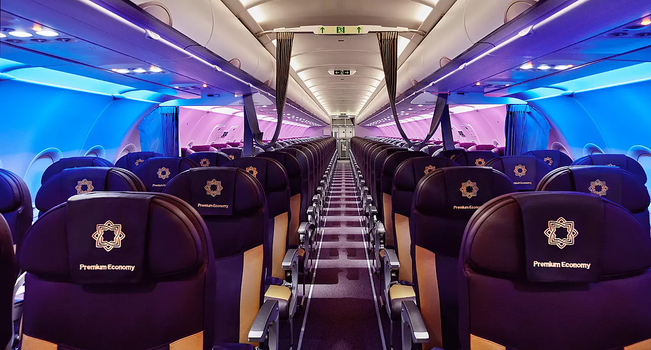Science Based Targets Initiative (SBTi) Validates Finnair’s Pioneering Path in Emissions Reduction as Airline Leverages Sustainable Aviation Fuel and Efficiency Upgrades
New Delhi, November 04, 2024: Finnair has redefined its climate commitments and set a new science-based target to reduce its carbon emissions intensity (CO2e/RTK) by 34.5 % by 2033 from a 2023 baseline. The Science Based Targets initiative (SBTi) has validated Finnair’s target. Translated to absolute CO2e emissions, the target equates to a reduction of approximately 13% in CO2e emissions using the parameters that have been established for the period.
SBTi requires airlines to decarbonize within their own operations, and Finnair’s toolkit to reaching the target is comprised of investing in Sustainable aviation fuels (SAF) beyond regulatory requirements, further improving operational efficiency, optimizing its network, and eventually updating its fleet renewal plan. Increasing the use of SAF accounts for over half of the targeted CO2e reduction for Finnair.
“Progress towards achieving the target will not be linear, as there are still challenges regarding the availability and affordability of SAF, the most important tool in our toolkit over the next ten years. We need to see rapid progress in the SAF market to support the decarbonization initiatives in aviation industry”, says Finnair’s CEO Turkka Kuusisto.
“The Finnair team is committed to doing our part to address the challenges involved, and we will work with dedication and determination towards our new science-based target.”
In connection with setting the new mid-term target, Finnair has reviewed its long-term climate target of achieving carbon neutrality by 2045. After careful consideration, Finnair has decided to align its long-term climate ambition with the industry’s united objective of achieving net-zero carbon emissions by 2050.
Finnair’s previous long-term target was set in 2019, before the heavy losses brought by the COVID-19 pandemic, and before the war in Ukraine led to the closure of Russian airspace and losing access to the emission-efficient short route between Europe and Asia. Also, the carbon neutrality goal was largely based on offsetting emissions, whereas achieving a net-zero target involves a significantly smaller role for offsets. With Finnair’s commitment to science-based targets for CO2 reductions, the focus is on reducing the airline’s own operational emissions, and the long-term aim is aligned with this.
“Right now, our focus is on the next ten years and achieving our science-based target of reducing our CO2e emissions intensity by 34.5% by 2033. At the same time, we continue to support the common goal of the industry to achieve net-zero carbon emissions by 2050 as outlined by the International Air Transport Association (IATA),” Kuusisto says.
Finnair’s SBTi target in detail
- Science Based Targets initiative (SBTi) independently assesses companies’ climate goals to ensure they align with the latest climate science. Climate targets validated by the SBTi guide companies on how much and how quickly they need to reduce their carbon emissions to meet the Paris Agreement’s goals — limiting global warming to 1.5°C above pre-industrial levels.
- Finnair’s SBTi target requires the airline to reduce its carbon emissions intensity (CO2e/RTK) by 34.5% by 2033, using 2023 as the baseline year. This target translates into an approximate 13% reduction in Finnair’s absolute CO2e emissions over this period. The absolute emissions reduction is an estimated figure based on variables such as annual growth forecasts, which may change in the future.
- Carbon emissions intensity is defined as the amount of carbon dioxide (CO2) emissions per revenue tonne kilometre (RTK), which is a measure of passenger and cargo payload carried by Finnair. In 2023, Finnair’s carbon emissions intensity was 976 CO2e/RTK.
- The target encompasses ‘well-to-wake’ emissions that accounts for the complete lifecycle emissions from the jet fuel used by Finnair, including direct emissions from the use of jet fuel in flight (scope 1) as well as indirect emissions from the extraction, production, and distribution of that fuel (scope 3).
- Finnair will monitor and annually report its progress against the target in its sustainability reports.
More information on Finnair’s climate action is available at Finnair.com
Corporate Comm India (CCI Newswire)


































